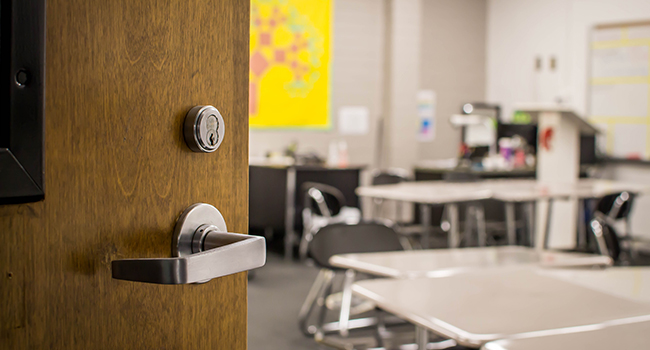
California School Board Approves Automatic Door-Locking System
The school board of the Rancho Santa Fe School District has approved plans to install an electronic access control system by the next school year.
- By Jessica Davis
- March 18, 2019
The Rancho Santa Fe School District school board approved plans Thursday to install an electronic access control system by the 2019-2020 school year. Funding for the project, which costs an estimated $424,000, will come from the district’s capital facilities fund.
The new system will allow for global lockdown capability with panic buttons, card readers, computers or mobile devices.
Teachers will be notified via LED lights if they classroom door is locked, but will also be able to lock them manually or with a key card. Teachers will also be able to unlock classroom doors from the inside if they need to let a student inside.
Jeff Kaye, President and CEO of School Safety Operations, assesses the security of campuses and offers recommendations. Kaye said Rancho Santa Fe had a high baseline for emergency preparedness but said it could always improve.
“What we see with locks at all schools is the inability to lock a door from inside of classroom without the use of keys. It makes sense because most of these schools were designed before we had this type of threat. Locks were meant to secure the school after school, not to keep something bad out during school," Kaye said.
According to Kaye, someone was killed during the Parkland, Fla., shooting last year when they opened the door to try and secure the classroom. Kaye recommends that all campuses invest in some kind of electronic locks.
“Money is a tough commodity in education safety, especially in California,” Kaye said. “So when we have someone trying to sell Kevlar doors or Kevlar safe rooms or Kevlar backpacks and the school doesn't have doors that can lock, we say it's like building your swimming pool before building your house.”
Kaye said there are more affordable options for larger school districts.
“That’s where we need to go in education safety, proactive rather than reactive," Kaye said.
About the Author
Jessica Davis is the Associate Content Editor for 1105 Media.